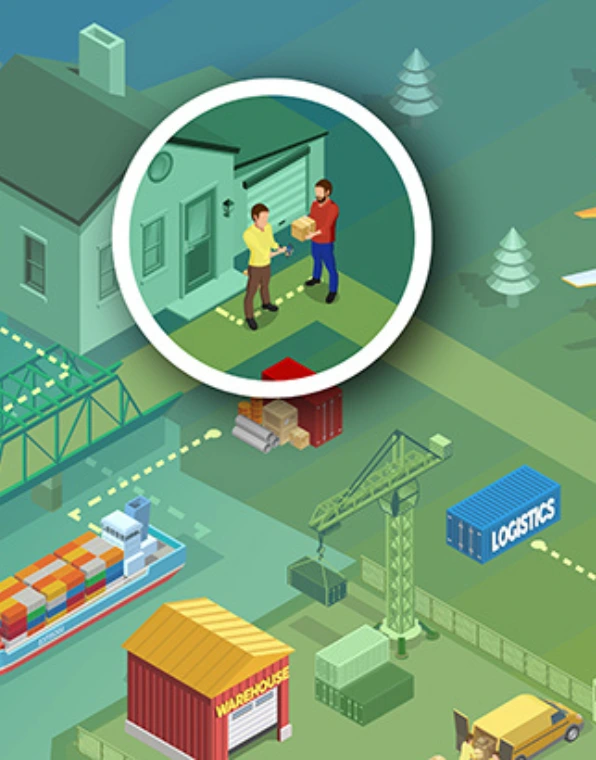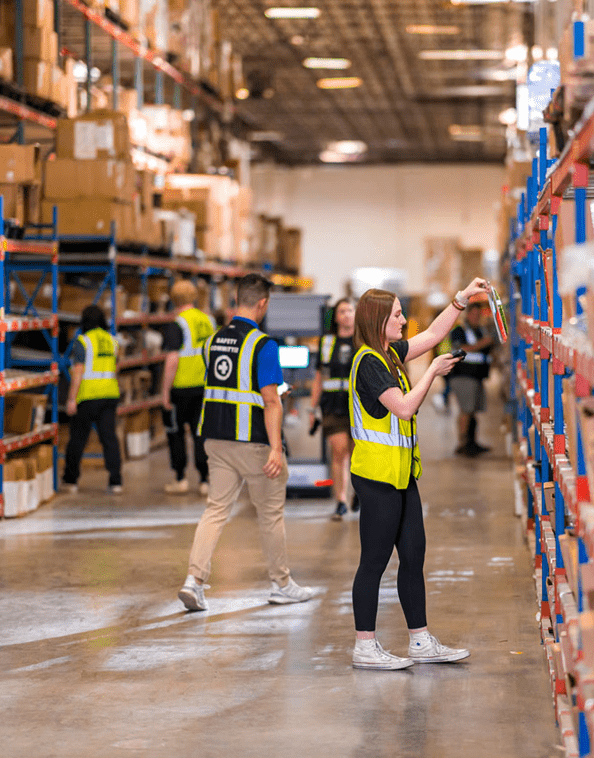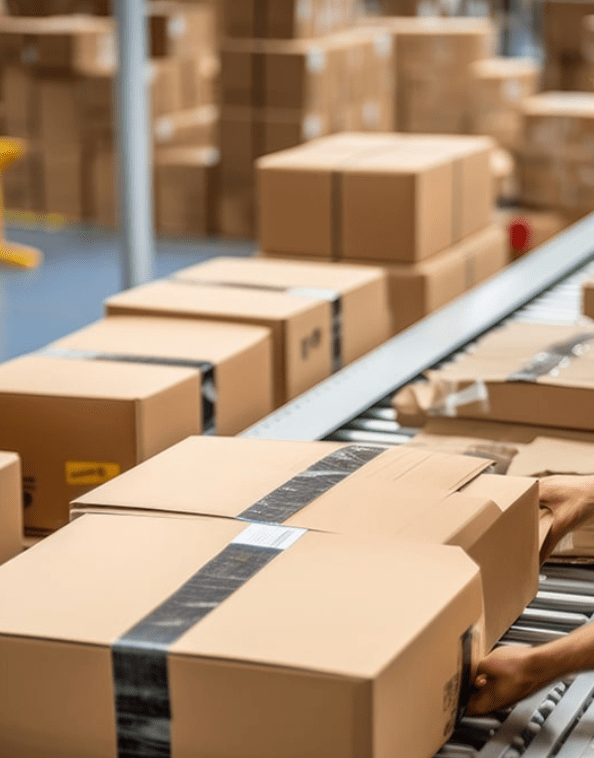Full Breakdown of Cargo Ship Costs
Cargo ships vary dramatically in cost depending on their size, function, and technology. A small cargo vessel might cost around $10 million, while a large, modern container ship could exceed $150 million.
Understanding these costs isn’t just for buyers. It’s valuable insight for logistics managers, freight forwarders, and supply chain professionals who want to optimize global shipping operations. Companies aiming to streamline distribution through third-party logistics (3PL) providers like FulfillMe can also benefit from this knowledge, especially when choosing partners with industry expertise.
Types of Cargo Ships and Their Price Ranges
The type of cargo ship you’re dealing with significantly affects its price. Here’s a breakdown of the most common vessel types and the reasons behind their cost variations:
1. Container Ships
Purpose: Transport standardized containers (e.g., 20- or 40-foot units).
Typical Cost: $50M–$150M+
Reason: High-tech features, automation, and increasing demand for efficient container transport contribute to the cost.
2. Bulk Carriers
Purpose: Move loose commodities like coal, grains, or minerals.
Typical Cost: $20M–$60M
Reason: Bulk carriers are less complex than container ships, though still large and powerful.
3. Tankers
Purpose: Designed to carry liquid goods such as crude oil, chemicals, and LNG.
Typical Cost: $30M–$120M+
Reason: Stringent safety systems and specialized structures raise their price.
4. Specialized Vessels
Purpose: Includes car carriers, livestock carriers, and heavy-lift ships.
Typical Cost: Highly variable – can range from $20M to $100M+
Reason: Unique designs and custom engineering for niche cargo types.
Key Factors That Influence Cargo Ship Prices
The price of a cargo ship isn’t just determined by its type—it also hinges on multiple other variables. Let’s dive into the most important ones:
1. Age and Condition
Older ships are cheaper upfront, often costing 30–70% less than new builds. However, maintenance and fuel inefficiency can make them more expensive over time.
2. Size and Cargo Capacity
The larger the vessel, the higher the cost. But bigger ships offer economies of scale, allowing lower shipping costs per container or ton of cargo.
3. Technical Specifications and Features
Modern navigation systems, engine types, emission control systems, and automation can drastically affect the price. Ships with green technology, such as low-sulfur fuel systems or hybrid engines, command a premium.
4. Market Demand and Global Trade Trends
Shipping is cyclical. During high-demand periods (e.g., post-pandemic recovery), ship prices can surge. During downturns, prices fall due to overcapacity and lower trade volumes.
5. Currency Exchange Rates
Shipbuilding transactions often involve multiple currencies, especially between buyers in the West and shipyards in Asia. Fluctuating exchange rates can affect the final cost.
Beyond the Purchase: What It Really Costs to Own a Cargo Ship
Buying a cargo ship is only part of the investment. Owners must also budget for operational, maintenance, and regulatory expenses. Here’s what to expect:
Initial Purchase and Construction Costs
Hull fabrication
Engine installation
Navigation and communication systems
Cargo handling systems
Custom modifications
These costs are typically bundled into the shipbuilder’s quote but can vary depending on the level of customization.
Operational & Maintenance Costs
Fuel (bunker fuel): Can exceed $10,000/day depending on ship size and oil prices.
Crew salaries: Ranges from $2M–$4M/year.
Dry-docking and repairs: Required every few years and can cost millions.
Port fees and harbor dues
Provisions and consumables
Partnering with a logistics expert like FulfillMe can help companies mitigate these costs through smarter freight planning and route optimization.
Insurance and Compliance
Insurance is a necessity, covering everything from hull damage to third-party liability. Costs are based on:
Ship age
Trade route risks
Type of cargo
Regulatory compliance (such as IMO 2020 sulfur caps) adds further costs. Many vessels need expensive retrofitting to meet newer environmental standards.
Financing Options for Cargo Ship Acquisition
If purchasing a ship outright isn’t feasible, various financing solutions are available:
1. Bank Loans
Traditional maritime lenders often offer long-term loans secured against the ship. Shop around for favorable interest rates and flexible repayment terms.
2. Leasing Agreements
Ship leasing allows companies to operate vessels without owning them. It’s ideal for businesses needing flexibility and lower upfront investment.
3. Government Subsidies and Support
Some governments support shipping ventures through grants, tax incentives, or low-interest loans—especially for vessels built in domestic shipyards or with eco-friendly technology.
For businesses expanding their international presence, working with FulfillMe to create a seamless global order fulfillment strategy is just as important as financing physical assets like vessels.
The Global Market’s Influence on Cargo Ship Pricing
Supply and Demand Shifts
The shipping market is highly reactive. A sudden spike in container demand (like during e-commerce booms) or a drop in ship availability (like port congestion) can send ship prices soaring.
Technological Disruption
Emerging technologies—autonomous navigation, IoT tracking, digital twins—are raising the standard for new builds. As these technologies become mainstream, older vessels risk becoming obsolete, decreasing their value.
Sustainability and Emissions Regulations
The move toward carbon-neutral shipping is influencing design and cost structures. Ships that meet or exceed regulatory benchmarks are in higher demand, which elevates their price.
In response, companies are shifting toward greener logistics solutions. FulfillMe helps bridge this gap by offering sustainability-focused 3PL services and reverse logistics that align with global environmental priorities.
Making Smart Decisions: Understanding the Full Cost of a Cargo Ship
Whether you’re a logistics company, a supply chain manager, or an investor looking into maritime assets, understanding the full cost of a cargo ship goes beyond the sticker price. You must account for long-term operational expenses, compliance requirements, and the volatility of the global shipping industry.
Investing in the right infrastructure—both digital and physical—can give your business a competitive advantage. That’s where working with a trusted logistics partner like FulfillMe can make a real difference. From helping companies manage warehouse fulfillment to navigating the complexities of international shipping, FulfillMe offers end-to-end logistics solutions tailored for growth.
Final Thoughts
To recap: cargo ship costs can range from $10 million to over $150 million, depending on the ship’s type, size, and features. But the real cost includes fuel, crew, repairs, insurance, and compliance.
Whether you’re building a global supply chain or simply curious about maritime operations, understanding the economics of cargo vessels helps you make smarter, data-informed decisions.
Interested in reducing freight costs, improving delivery times, or launching an international logistics operation? Reach out to FulfillMe—your trusted partner for scalable and sustainable fulfillment solutions.

Norman Kravitz is a logistics and fulfillment expert with extensive experience in e-commerce supply chains, currently serving as CEO and Founder of FulfillMe, a technology-enabled 3PL provider. Beginning his career at the United States Postal Service and later leading operations at Ddu Express, he has deep expertise in freight forwarding, inventory management, and cost optimization. Norman’s strategic approach to logistics operations and e-commerce fulfillment positions him as a trusted authority in the 3PL industry.








